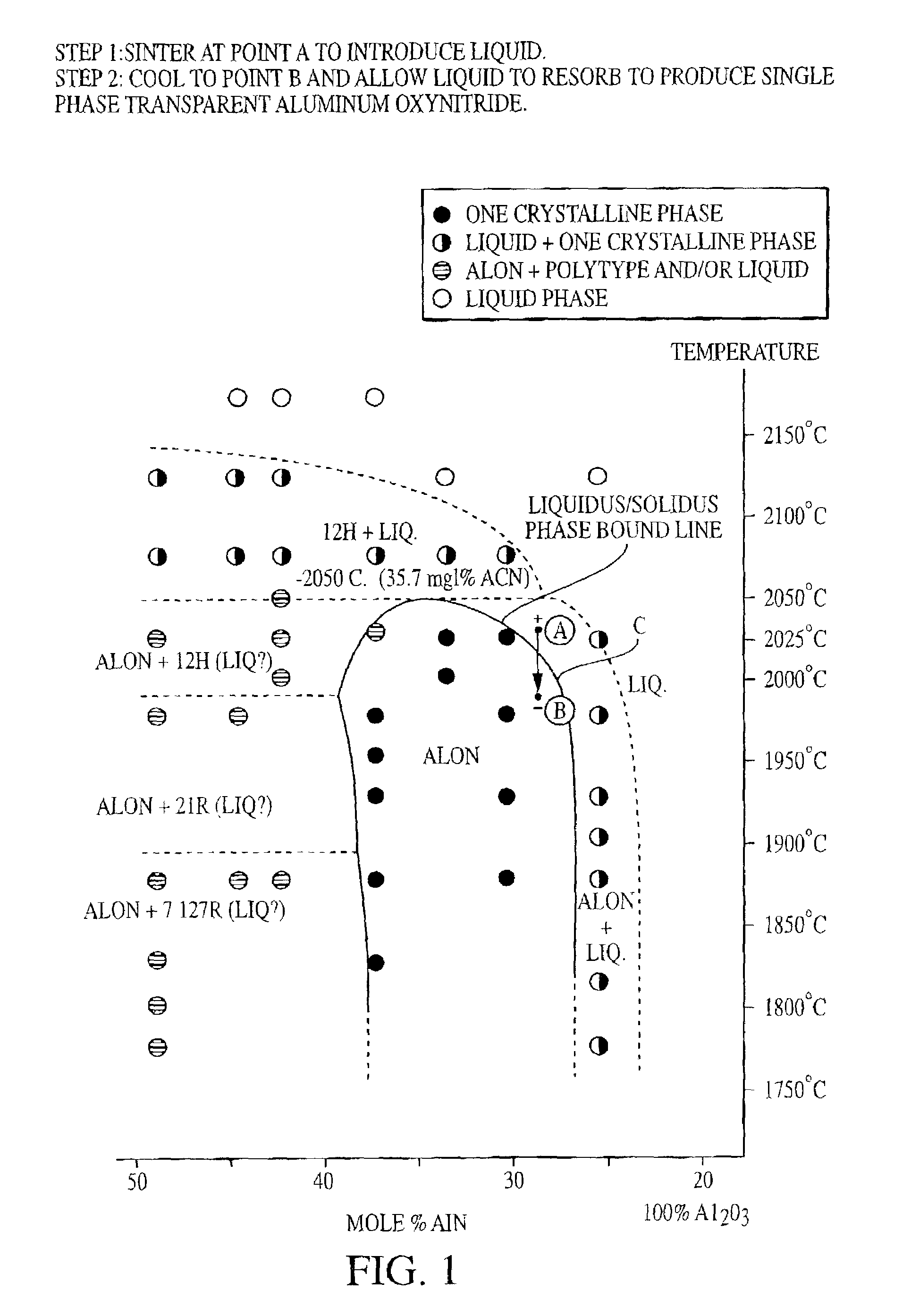Transient liquid phase reactive sintering of aluminum oxynitride (AlON)
a technology of aluminum oxynitride and liquid phase, which is applied in the field of transient liquid phase reactive sintering of aluminum oxynitride (alon), can solve the problems of affecting the production efficiency of aluminum oxynitride bodies for industrial and military purposes, affecting the quality of aluminum oxynitride bodies, etc., to achieve the effect of reducing sintering times and production costs
- Summary
- Abstract
- Description
- Claims
- Application Information
AI Technical Summary
Benefits of technology
Problems solved by technology
Method used
Image
Examples
examples 1 – 7
EXAMPLES 1–7
[0049]The following samples are compounded, heat treated and sintered single phase polycrystalline cubic aluminum oxynitride samples constructed in accordance with the present invention, with only distinctions being the heat treat and sintering durations and temperatures. The following data were recorded.
[0050]
FIG. 1, pt. AFIG. Pt. B(two phase region)(one phase region)Heat TreatingSinteringTemp. (Time)Temp. (Time)Observation1a.2025° C. (30 minutes)2000° C. (4 hours)Translucent1b.2025° C. (30 minutes)2000° C. (8 hours)Translucent1c.2025° C. (30 minutes)2000° C. (12 hours)Translucent1d.2025° C. (30 minutes)2000° C. (16 hours)Translucent2a.2025° C. (5 minutes)1950° C. (16 hours)Translucent2b.2025° C. (30 minutes)1950° C. (16 hours)Translucent2c.2025° C. (60 minutes)1950° C. (16 hours)Translucent2d.2025° C. (120 minutes)1950° C. (16 hours)Translucent3.2025° C. (1 minute)1975° C. (16 hours)Translucent4a.2010° C. (15 minutes)2010° C. (4 hours)Translucent4b.2010° C. (30 minutes...
PUM
| Property | Measurement | Unit |
|---|---|---|
| Temperature | aaaaa | aaaaa |
| Temperature | aaaaa | aaaaa |
| Temperature | aaaaa | aaaaa |
Abstract
Description
Claims
Application Information
 Login to View More
Login to View More - R&D
- Intellectual Property
- Life Sciences
- Materials
- Tech Scout
- Unparalleled Data Quality
- Higher Quality Content
- 60% Fewer Hallucinations
Browse by: Latest US Patents, China's latest patents, Technical Efficacy Thesaurus, Application Domain, Technology Topic, Popular Technical Reports.
© 2025 PatSnap. All rights reserved.Legal|Privacy policy|Modern Slavery Act Transparency Statement|Sitemap|About US| Contact US: help@patsnap.com



